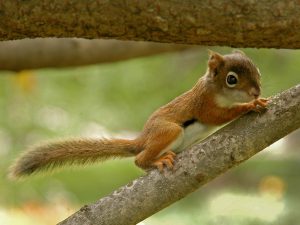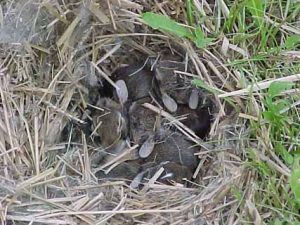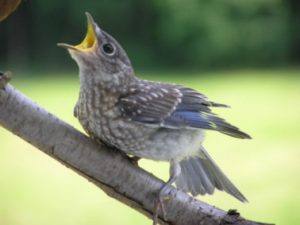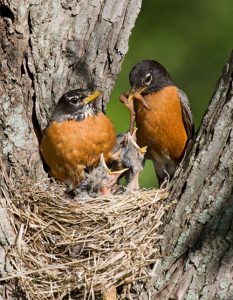It’s that time of year again, when natural life is springing back into motion! The warm weather has finally arrived, and many of us are becoming more active and enjoying the outdoors. The same goes for our wildlife friends—birds, squirrels, rabbits and many other native animals are busy building nests and raising their young.
Sometimes we are lucky enough to witness this miracle of life in our own backyards, since many of these animals call the same areas as us home. Occasionally people stumble upon young animals that seem to be misplaced or in distress, and may be worried that they need our help.
Irvine’s animal care department receives numerous calls every year from people concerned about lost or injured spring babies. While many of the animals that live on exhibit or act as our educational ambassadors came from situations where they were found and cared for by kind-hearted people, Irvine is not a wildlife rehabilitation facility and does not have the proper tools to provide animals the same medical care they could get from a trained rehab specialist or veterinarian.
And many times, animals that we think need our help are actually doing just fine on their own. If you find a baby bird or bunny, there are some things you should consider before getting involved.
First, check to see if the young animal is injured—is it visibly bleeding, weak, or did you see another animal attack it? If so, you can call your local wildlife rehabilitor to receive further instruction on how to help.
If you’ve found a mammal (rabbit, squirrel, chipmunk, etc) and it seems to be healthy and has its eyes open, look around to see if you can locate a nest or den—the baby may have just have strayed and is exploring its environment. Most likely the mother will return soon and care for the baby. If you stay out of sight, keep any pets away and watch for a few hours, she should return or the baby should head back into the safety of its nest. This is a part of the growing-up process for many small animals.
- Cottontail Rabbit Nest
If you’ve found a young bird outside of its nest, check first to see if it has feathers. Young birds go through the process of “fledging”, when they are testing out their wings and hop around on the ground until they can fully fly. Once again, this is normal and is no cause for alarm as long as you keep any pets away from it. The parents will continue to feed and care for the fledgling until it is fully grown.
If the baby bird does not have feathers, it is a nestling and may have fallen from its tree. Try to locate the nest, and if you can, place the baby bird back into its nest. Watch for a while from a distance and see if the parents return. If you see them visiting, the baby is okay. If you cannot locate a nest, or if the nest has been dislodged, you could make a substitute for the baby using a small box or basket lined with dry grass or pine needles. Place the baby inside and try to put it in the tree closest to where you found the bird. If you notice the parents return, then all is well.
- Fledgling begging for food
- Robins attending to hungry chicks
If you’ve gone through all the steps suggested above, and you feel the baby animal is at risk or you’ve noticed that the parents have not returned, you can contact your local wildlife rehabilitator. There are several available to the Baltimore area—but keep in mind that this is a very busy time of year for them, and there is no better caregiver for that animal than its own parents.
Often it can be hard not to interfere, as baby animals have a way of tugging at our heartstrings. But it’s important to remember that sometimes we must let nature take its course.
For more information, contact a local wildlife rehabilitator:
Frisky’s Wildlife & Primate Sanctuary
Wildlife Rescue, Inc




